Award-winning author/illustrator Raúl the Third is the creative mind behind many of today’s most popular children’s books. He illustrates the Lowriders series, including the newest addition, Lowriders to the Rescue.
In this exclusive Booksource interview, Raúl the Third talks about his travels, his creative process and the inspiration behind his work. Learn more about Raúl the Third and how he connects with the next generation of author/illustrators.
A fourth Lowriders book comes out in May! It looks like our heroes will be tackling some heavier topics in this one, including climate change. Is this a conscious reaction to some of the fears and anxiety we’re facing? What do you hope young readers will get out of this book?
This book offers hope and solutions to our readers who might feel overwhelmed by what is happening to our planet and communities. I just came back from visiting my mom in El Paso, Texas, and she showed me where she had planted milkweed hotels for the monarch butterflies.
Cathy Camper writes about the connections between Arabic culture and Spanish while tying it together with migration, and this gives us the perfect opportunity to discuss how we are all related. If we work together as a community, we can make the necessary changes to make life sustainable for everyone on the planet, one milkweed hotel and rec center at a time.
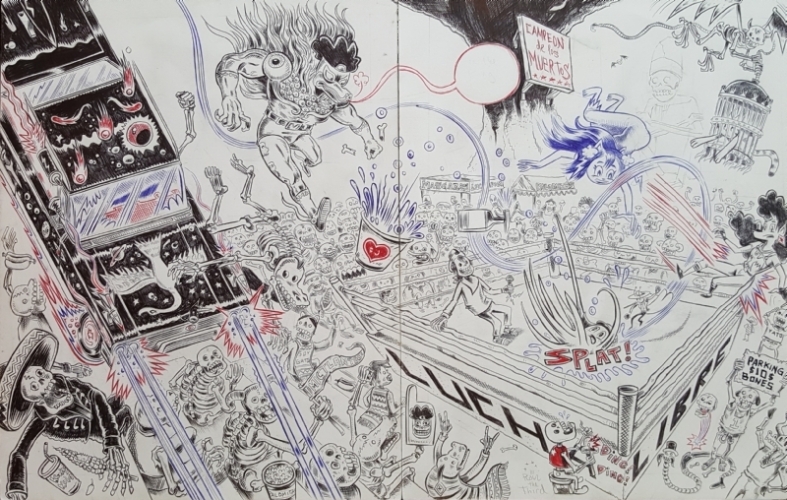
When working on such busy scenes, do you create the illustrations first and develop the story from them? Or is it the other way around? Do you have the story and words planned out and create your drawings to match?
It starts with the title. Then I begin to create lists of things that I would love to draw in the book. After I write the script, I start to create loose drawings. It isn’t until I’ve started the final art that I begin to include all of the fun stuff that you see in each book. The last step is very spontaneous, fun and surprising. I never know what detail I’ll draw in!
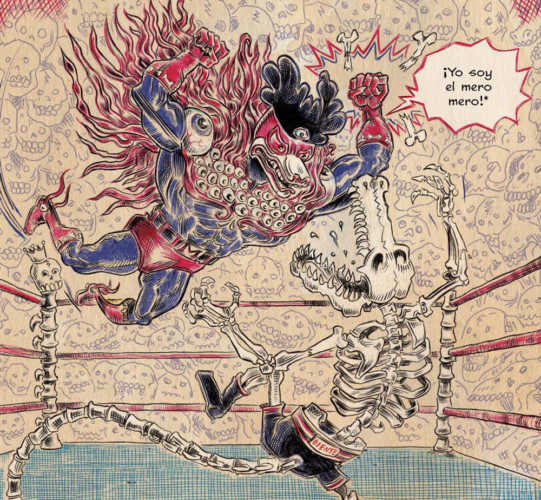
You’ve collaborated on some great titles with many different authors. What are some of the benefits or challenges you face illustrating other people’s writing? Do you prefer to illustrate your own works? What’s your favorite thing about collaborating on projects?
I have learned so much from each and every collaboration, plus I get to draw things that would have never occurred to me on my own. I’m lucky that my collaborators trust me with their stories and let me do what I do. With the world of ¡Vamos!, creating my own line of books with Elaine Bay and helping to develop it into an animated television series and line of stuffies has been a dream come true.
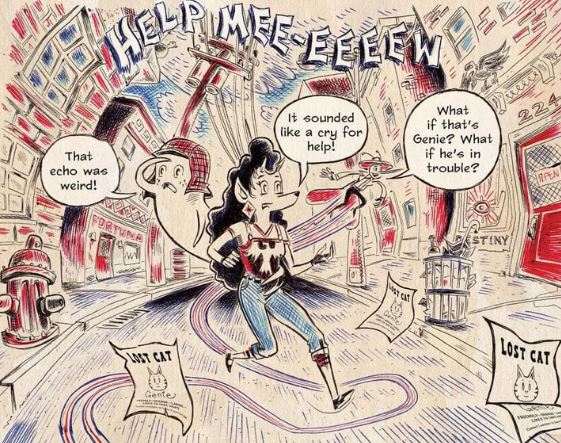
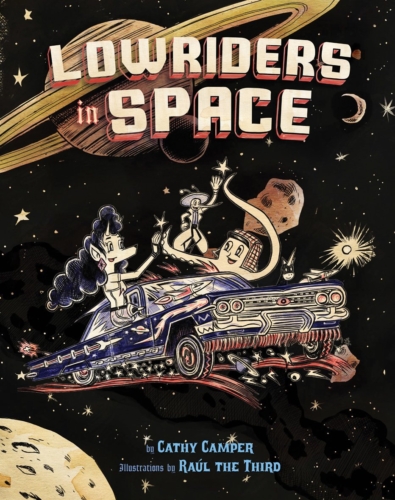
Lowriders In Space was your first published graphic novel, but you’d been self-publishing zines for years before that. Do you ever think about going back to that material for new books or working to get those stories published?
Mal Burro and Peeky Pequeño from the ¡Vamos! books appeared in some of my zines, and I just signed an unannounced deal from an idea I wrote about in a zine nearly twenty years ago! I do have plans on developing some of my other zines into books at some point.
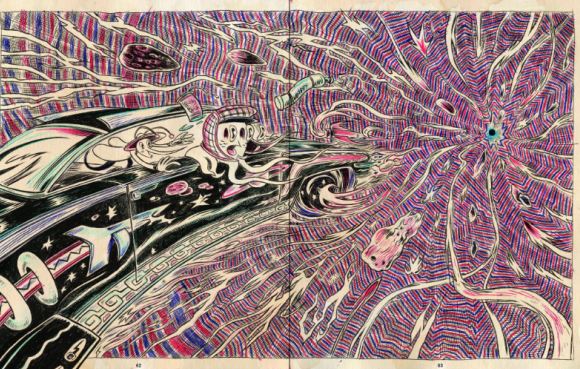
As an author/illustrator as well as a fine artist, you’ve worked with different materials and in different formats. Are there any you prefer?
I go with the flow, so I don’t really think about it. I guess I just use whatever material I feel works best for whatever project I’m working on. With Lowriders it was Bic ballpoint pens, Stuntboy was digital and for ¡Vamos! I used traditional cartooning tools.
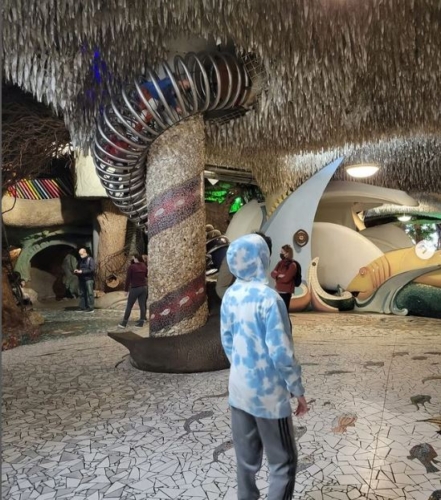
Your Instagram shows that you love traveling and visiting new places with your family. Do you have a favorite place or a trip? Is there a city or community that really surprised you (positively or negatively)? How much do your travels influence your work?
Every trip reminds me how beautiful and inspiring every corner of our world can be. I am most inspired by the friendliness and kindness of the people I meet wherever we go. I loved visiting St. Louis and sitting at Chili Mac’s Diner with my son. We ate our bowls of chili while listening in on the morning gossip of the staff and regulars before we headed to the inspiring City Museum.
You’ve spoken about your childhood love of comics. Is there a comic or an artist that was particularly influential? How does it feel knowing you’re now influencing a new generation of artists?
I have had so many influences over the years and particulars are difficult to pinpoint, but I’m constantly referencing combinations of many different artists such as Kirby, Herriman, Segar, Barks, Basquiat, Haring and so many others in my work. I feel that as artists we are basically channeling influences and life experiences and that our work is an amalgamation of multi-morphing things. I love that my work might be influencing tomorrow’s great artists, and I look forward to meeting them when we sign books together at an event of some kind!
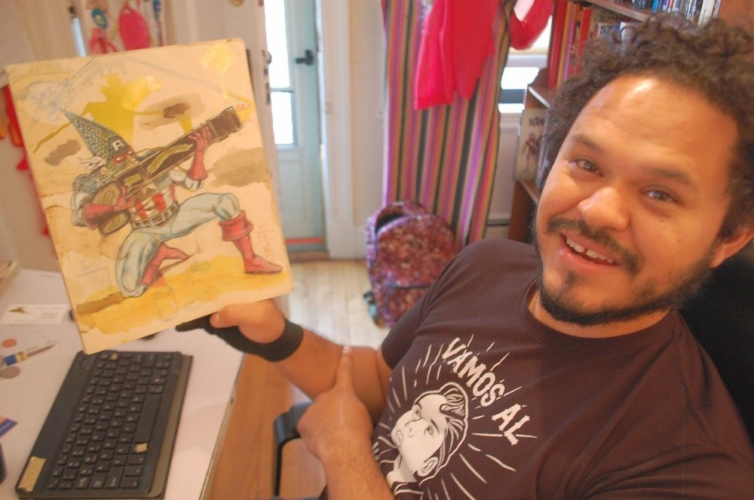
You have a very distinctive illustration style. Beyond content, are there any differences between your exhibited art and murals and the artwork you do for your children’s books? Do you approach it or prepare differently? Do you have a different mindset?
All of my work centers around the Frontera experience, but there is a difference in terms of how you prepare for an exhibition versus a book. It’s hard to explain, but it comes down to how the work is experienced by the audience. Books are personal objects that can be read and reread at whatever pace the individual decides, and a gallery exhibition is a temporary experience made up of individual works that work together as a whole, which will more than likely never be seen together again. Both experiences are challenging and thrilling, and I enjoy working in both spaces.
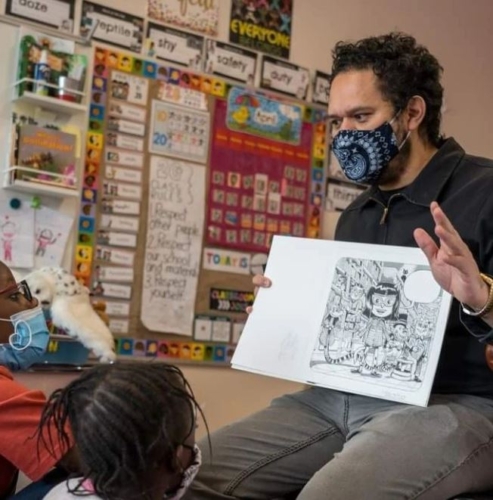
You seem to really enjoy presenting to kids and schools, encouraging them in their creativity. Obviously, the pandemic made it very difficult to interact with students the same way. Did you find it difficult to adapt to the new ways we communicate? Was there a fear your message wouldn’t be as strong or as well-received when it couldn’t be delivered in person?
I missed the interaction that I have with an audience. Working with their laughter and smiling faces is always a thrill, but simultaneously I am so happy that we have been able to connect with kids and teachers virtually throughout the pandemic. I have loved the art and stories teachers have shared with me after a visit. It shows that we are making that important connection even though we are miles apart.
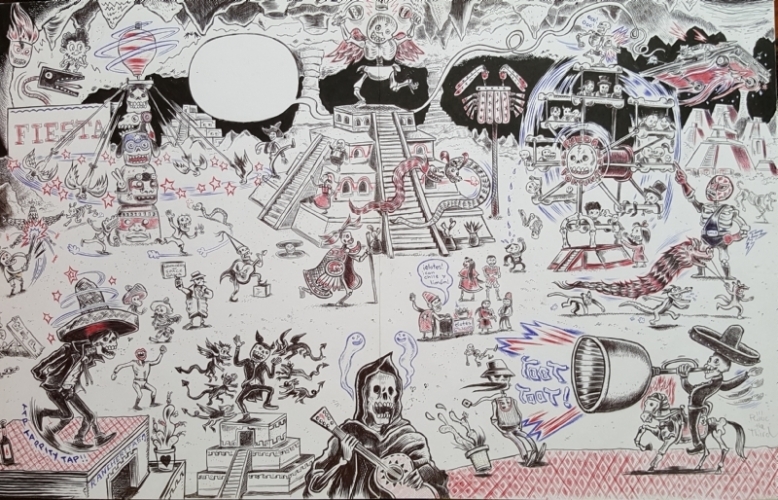
Your work incorporates a lot of Spanish into the text, which helps to introduce Spanish words and phrases to audiences that might not know the language. Was there a conscious effort on your part as a creator to use language this way? Or was this just a natural development in how you story-tell? What are you hoping children and young readers will get out of being exposed to new language like this?
I grew up in El Paso, Texas and Juarez in Mexico, so speaking both languages and a mixture of the two was simply a way of life for me. I want my young readers who are experiencing a similar upbringing to be proud of their heritage and the languages they speak.
Often when I was a kid, I was discouraged from speaking in Spanish, and at times I felt ashamed that my Mom only spoke Spanish. When my Dad was young, he would get in trouble at school for speaking Spanish.
I make these books to share our amazing border communities through our art, customs and languages, and to celebrate who we are. I want to encourage our youth to write and draw their personal stories, and I hope my books help to inspire that.
You’ve received multiple Pura Belpré Awards and Honors, the first being for Lowriders in Space. How does it feel to have your work recognized by the library community?
When my Mom took us to the library for the first time it was such a magical experience for us as a family. It was probably the first time that we felt we were a part of a community in the United States. We were invited to participate in all sorts of programs. English classes, performing, reading programs, art classes, snacks. For a family that was struggling financially, these free programs were instrumental to us. I am currently working on ¡Vamos! Let’s go Read and in it, I share why libraries are so important to our communities. To have won the Pura Belpré prize four times is such an honor to me, and I feel so blessed by the love and support that librarians have given to me throughout my entire life.
Educators, you can shop the Lowriders series and Raúl the Third’s other books on our website.
What are your students’ favorite things about Raúl the Third’s books? Tell us in the comments.


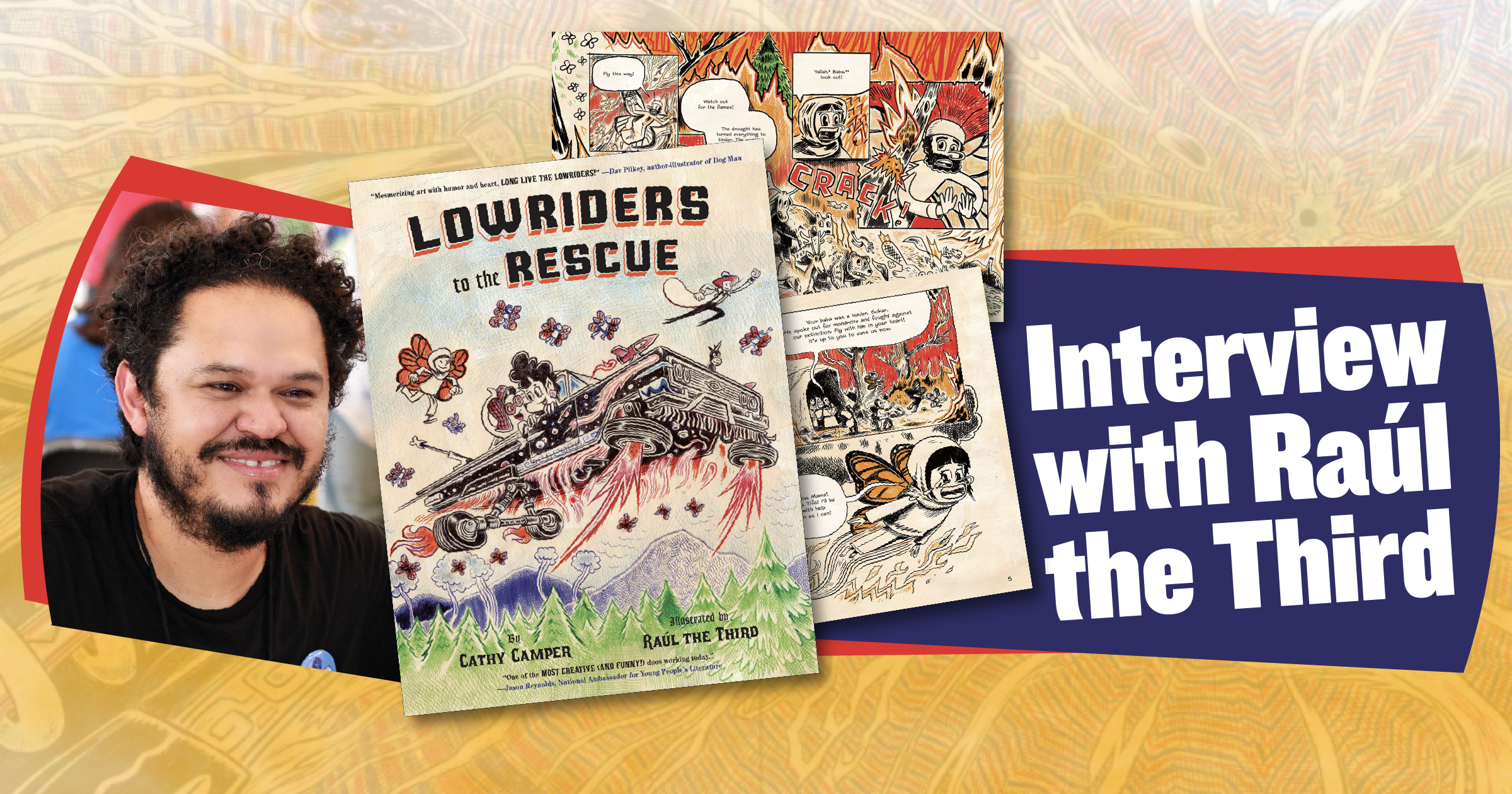


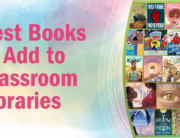
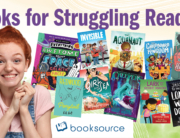
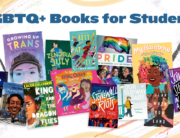
Raul the Third’s books are among the most popular at my bilingual elementary across all ages and demographics. His use of both English and Spanish with his incredibly fun and detailed illustrations make his books enjoyable and accessible to everyone.
Thanks for sharing, David! We agree, his works really make a positive impact on students.
[…] Raúl the Third discusses how picture books like the Lowriders series can help students to embrace their heritage and start writing their own stories. You can shop the Lowriders series and Raúl the Third’s other books on our […]